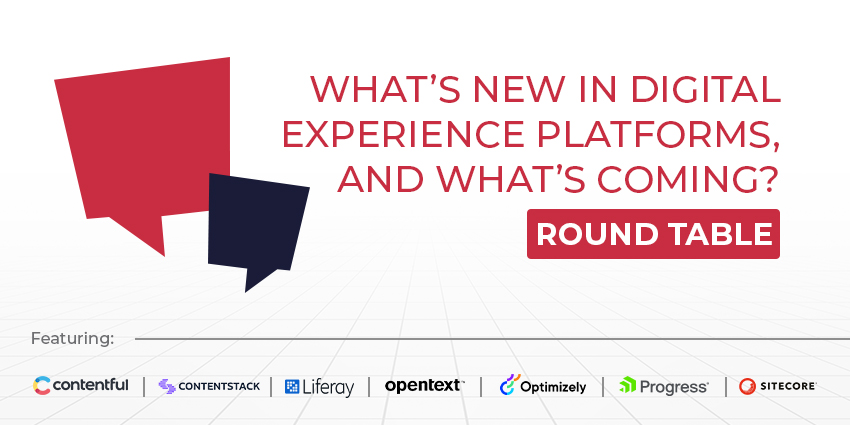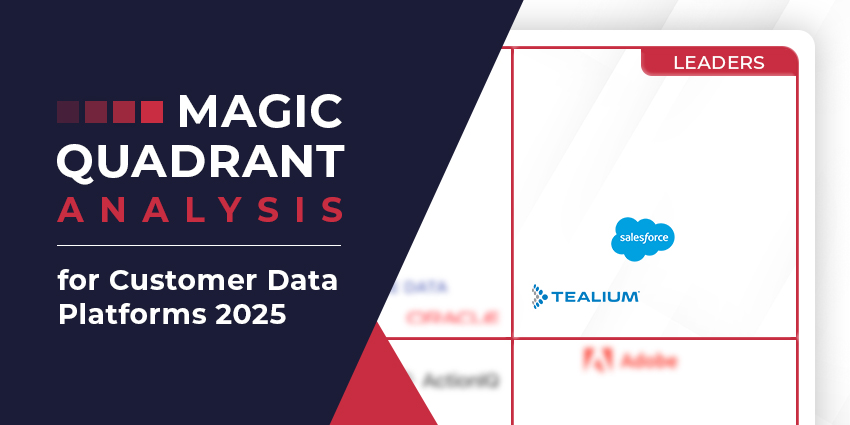Are you making the most of your customer experience analytics?
Most business owners know how important it is to monitor metrics and collect essential insights throughout the customer journey. After all, the only way you can really ensure you’re adhering to your customer’s expectations is to listen to them and commit to constant optimization.
However, how we analyze customer interactions has evolved significantly in recent years. Businesses aren’t just reliant on surveys and quantitative metrics like “call waiting time” anymore.
Intelligent solutions have emerged to provide us with a clearer view of the customer. We can now evaluate everything from the sentiment in a customer’s tone of voice to their actions throughout the buyer journey.
Investing in the right strategy for customer experience analytics is how business leaders improve their ROI, boost customer loyalty, and even create more effective agents.
So, where do you begin? Here’s everything you need to know.
What is Customer Experience Analytics?
Let’s start with a quick refresher. Customer Experience Analytics is collecting, assessing, and acting on customer data, often from various touchpoints. The right CX analysis strategy looks at different points in the customer journey.
It examines how customers interact with your website, connect with agents in real time, and even use self-service tools and chatbots. The purpose of customer experience analytics is to provide businesses with all the behind-the-scenes data they need to understand their customers.
The more you know about your target audience, their pain points, and goals, the more you can craft a powerful “CX Strategy.”
The Key Customer Experience Metrics
While analytical tools can generate a lot of data, some of the core areas many businesses focus on include:
- CSAT: The CSAT score evaluates how happy customers are with you at every stage of their journey. Often, you’ll generate a score by sending out surveys asking customers to score their experience on a scale of 1 to 5. You then aggregate those scores to get an insight into customers’ general sentiment towards your brand.
- NPS: Similar to CSAT, NPS scores are calculated through surveys, asking customers to rate how likely they’d be to recommend a company to someone else. The higher your NPS score, the more likely you are to convert clients into brand advocates.
- CES: Customer Effort Score looks at how difficult it is for customers to move through their journey with you. Usually, you’ll send customers a survey asking them to rank how easy their experience with your business was on a scale of 1 to 10.
- CLV: Customer Lifetime Value examines how much revenue each customer generates for your business on average over their lifetime. The higher your CLV, the more likely you will have satisfied, loyal customers who make multiple purchases.
- CRR: Customer retention rate measures the percentage of customers who prolong their interactions with your brand. You simply divide the number of paying customers you have left at the end of a period by the total number at the beginning of the same period.
Most customer experience analytics tools focus heavily on “direct customer feedback,” or the voice of the customer, with surveys and questionnaires.
However, they can also track indirect metrics that contribute to CX scores. For instance, you might monitor average handling times, customer reviews, average spend, or average waiting time.
The Benefits of Customer Experience Analytics
A complete strategy for leveraging customer experience analytics requires a lot of data analysis. There are plenty of different metrics and KPIs to manage. But while a full analysis does take time and work, it’s well worth the effort. Whether your goal is to reduce churn or improve your brand reputation, CX analytics will help you move in the right direction.
The biggest benefits of implementing the right strategy include:
1. Improved customer insights
Probably the most apparent benefit of customer experience analytics is improving your understanding of your customer. The more comprehensive your insights are, the easier it is to make the right decisions to improve customer service.
Analytical tools and AI systems can give you a behind-the-scenes view of every stage of your customer journey. They can show you which channels customers use so you know how to distribute your human resources. The right tools offer insight into your customer’s sentiment and perception of your brand and how it can change based on employee actions.
2. Reduced churn (and higher retention)
Customers abandon businesses for a host of different reasons. Finding out what’s most likely to drive your clients away from you is the best way to eliminate these problems. With customer experience analytics, you can discover what repeat problems customers face. This paves the way for the creation of better self-service resources and tools.
With sentiment analysis tools, you might even be able to pinpoint customers most likely to churn in the moment. This makes it easier to provide agents with guidance that can de-escalate a situation and boost your chances of retention.
3. Better agent training
Running a successful CX strategy requires more than just the right contact center tools and tech. You also need agents who are incredible at their job. Customer experience analytics can give you the insights you need to provide team members with more insightful training.
You can determine which skills to work on with your teams, from empathy to active listening. You can also figure out ways of empowering your agents through the customer journey. For instance, if you know customers are calling about a specific problem, you can provide each agent with an automated trouble-shooting guide to help them address the issue.
4. A competitive edge
Gartner’s research found customer experience drives 60% of all brand loyalty – more than your product prices and features. Customer experience analytics guide you to create experiences that set you apart from the competition.
You can use insights to segment your consumers and provide them with more personalized interactions based on their preferences. You can even use your data to power your sales and marketing campaigns, boosting your chances of higher conversions.
5. Greater revenue
Improved marketing and sales strategies aren’t the only way customer experience analytics can improve your bottom line. Happier customers lead to higher retention rates, which means improved lifetime value. Plus, customers who love your business are more likely to spend more on each purchase, increasing order values.
Studies show that customers who experienced excellent interactions with businesses spent around 140% more on average than their counterparts. Great experiences pay off.
How to Use Customer Experience Analytics
So, how do you use customer experience analytics effectively? The good news is it’s much easier to take advantage of insights today than a while ago. In the past, many brands often struggled to transform the data they collected into actionable insights.
Contact center leaders are creating entire toolkits to rectify this problem. The right analytics platform, or CCaaS solution, can instantly convert data into reports that drive your business. It can show customer sentiment in real-time, identify trends in caller behavior, and more.
Plus, many of these tools also integrate with existing customer profiles on CRM platforms.
Still, even with the perfect toolkit, you need the right strategy.
Here are some of the best steps for getting the most out of your CX analytics:
1. Set a goal in advance
As mentioned above, customer experience analytics tools can collect and process a lot of data. It’s easy to get overwhelmed by the numbers if you don’t know what you’re looking for. Setting a specific goal for your analysis project will help here.
Think about what you want to accomplish. Are you trying to retain customers and reduce customer churn? Then, you might want to look at turnover rates and satisfaction scores. If you’re worried about customers’ perception of your brand, check sentiment analysis rates and reviews.
2. Determine your data sources
Next, you’ll need to figure out where you’ll collect insights. Your contact center analysis tools can help with reports on average handling times. If you’re trying to collect direct customer feedback, you may need a survey tool.
For a more comprehensive view, it might be worth tying in other forms of data. For instance, website or physical store traffic can give a clear insight into the customer journey. Information from your CRM system, social monitoring tools, and reviews can be helpful, too. You can even examine data on purchases, repurchases, and returns.
3. Align your data points
Now, you need to bring all those information sources together in a single source of truth. A powerful CCaaS solution or customer journey mapping tool can help here. Most solutions support integrations with a wide range of data sources to help reduce manual work.
Make sure you check the validity and accuracy of your data after combining it. The last thing you want is repetitive data points skewing your results. AI and automation tools can often help clean up your data, ready for analysis.
4. Turn your data into actionable insights
Once you have your single point of truth, packed with information about your customer’s experience, it’s time to turn that raw information into something actionable. In other words, you need to assess the data, looking for trends, patterns, and opportunities to optimize.
Leading AI analytics tools should be able to provide some valuable insights here. They can transform data points into visual graphs and easy-to-understand insights you can share with your team.
5. Act on your discoveries
Finally, simply finding the right insights isn’t enough. You also need to turn them into genuine action. Work with your team to develop solutions to common friction points and problems in the CX journey. Consider implementing new strategies, such as additional communication channels, scheduling plans, or employee training.
Once you implement those changes, consider how they influence your customer experience metrics. Do CSAT scores soar after your agents become more empathetic? Do your return purchases increase after you implement a chatbot for processing transactions?
Tips for Customer Experience Analytics
A truly comprehensive customer experience analytics strategy takes time and creativity to master. Even with all the fantastic tools available today, you may need to commit to some experimentation before seeing results.
Fortunately, some quick tips can help to accelerate your progress:
- Use AI: The adoption of AI in the contact center is ramping up for a good reason. Intelligent tools can help convert raw data into actionable insights. They can show you patterns and trends you might miss on your own. Plus, they can even assess customer sentiment.
- Automate: To master customer experience analytics, you need a lot of data. Collecting that information can be difficult and time-consuming manually. Automating things like sending out surveys and monitoring satisfaction scores can save you a lot of time.
- Validate your data: Remember that your insights are only as good as the data you collect. If your survey responses are limited, or you have duplicate data in your resources, you’re going to end up with skewed results. Make sure your data is telling the truth.
- Stay one step ahead: Historical data can be an excellent tool in the contact center, particularly if you need help predicting future problems. Predictive analytics can help you schedule teams and mitigate issues more effectively.
- Test every strategy: Once you implement a “fix” for a customer experience problem, track the results. Pay attention to how your metrics change, and don’t be afraid to continue experimenting if you don’t get the outcome you hoped for.
Effective customer experience analytics are the key to earning and retaining happy, loyal customers. Make sure you’re making the most of the resources available today to understand and respond to the needs of your target audience.







